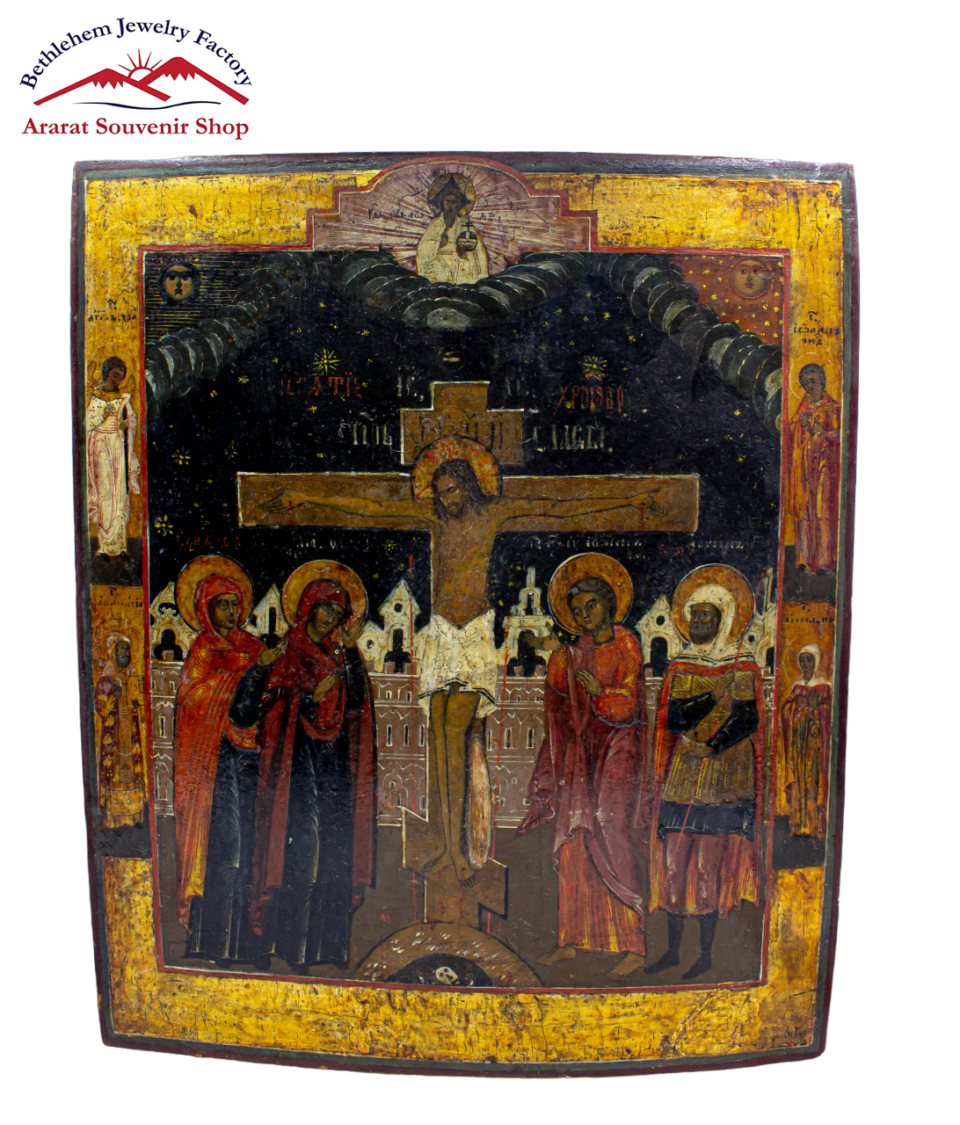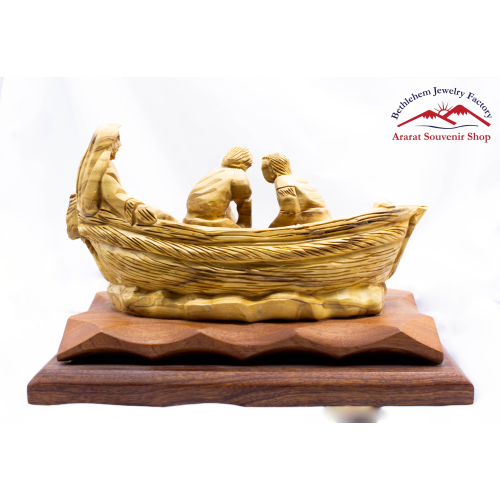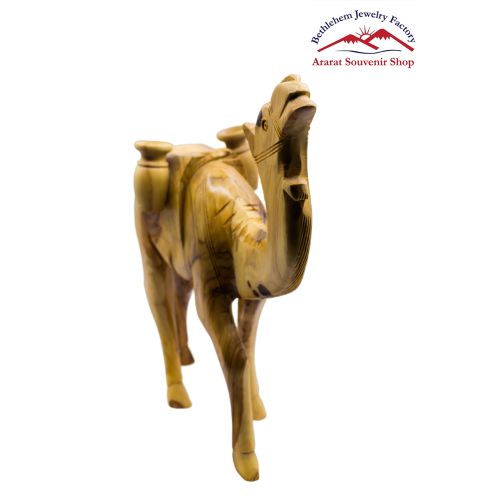Jesus crucified Icon
The icon of the Crucifixion of Jesus Christ stands as one of the most poignant and powerful representations in Christian iconography, encapsulating the core of Christian faith—the sacrificial love of Christ and His redemptive mission for humanity. This icon is not merely an artistic depiction but a theological statement that profoundly impacts worship, devotion, and Christian understanding of suffering and salvation.
At its heart, the Crucifixion icon recounts the moment when Jesus, who had preached love, mercy, and reconciliation, willingly accepted death on a cross for the sake of humanity’s redemption. This act, central to Christian belief, is rooted in the biblical narrative found in the Gospels, where the Passion of Christ culminates in His crucifixion. The icon serves as a visual retelling of this pivotal event, inviting believers to reflect upon the profundity of Christ’s sacrifice.
In traditional representations, the crucifixion scene is portrayed with Jesus nailed to the wooden cross, His body often depicted with a serene and peaceful expression. This portrayal emphasizes His acceptance of suffering and sacrifice. Surrounding Him are figures that embody various responses to His crucifixion, including the Virgin Mary, who stands in grief and sorrow, St. John the Apostle, who offers consolation, and often, alongside them, a multitude of figures representing both divine and human responses to this tragic event.
The arrangement of figures around the cross is rich with symbolism. Mary, depicted with downcast eyes and outstretched arms, reflects the depth of her maternal grief and love—her suffering is intertwined with her Son’s sacrifice. St. John, often portrayed in an embrace with Mary, signifies the solidarity of the disciples with the suffering Redeemer. These figures serve to draw the viewer into the emotional and spiritual milieu of the moment, fostering identification with the witnesses of Jesus’ suffering.
The two thieves crucified alongside Jesus often appear in the icon, representing the choices faced by humanity. One, often depicted in a position of disdain towards Christ, symbolizes rebellion and rejection of divine grace, while the other exhibits repentance and faith, ultimately expressing the possibility of salvation. This dual representation reinforces the Christian belief in free will and redemption—every person faces a choice in relation to Christ.
The cross itself is not merely a means of execution; in the iconography of the Crucifixion, it becomes a symbol of paradox. It represents both suffering and a pathway to salvation. The vertical beam signifies Christ’s divine connection with the Father, while the horizontal arm evokes His embrace of humanity. In Orthodox Christian theology, the cross is known as the “Tree of Life,” through which eternal life is promised to believers.
The use of color and light in Crucifixion icons adds depth to the narrative. Dark tones may signify the weight of sin and suffering covering the earth as Christ dies, while golden and white hues often surround His figure, symbolizing His divine nature and the hope of resurrection that follows His death. These contrasts invite viewers into a deeper contemplation of the duality of despair and hope that characterizes the Christian faith.
The Crucifixion icon also engages with the theme of sacrifice, resonating profoundly in Christian liturgy and devotion. Throughout the history of the church, this icon has adorned altars, sanctuaries, and personal spaces, becoming a focal point for prayer and reflection. The image invites believers to confront the gravity of human sin while simultaneously offering solace in divine love and forgiveness.
As worshippers gaze upon the icon, they are reminded of the cost of their faith—Christ’s willingness to endure pain, humiliation, and rejection on their behalf. The icon serves as a visual catechism, teaching the fundamentals of Christian belief: that through His death, Christ conquered sin and death itself, providing a means of reconciliation with God. It urges the faithful to contemplate their own lives in light of Christ’s sacrifice, encouraging an attitude of gratitude, repentance, and a desire to live in accordance with His teachings.
The impact of the Crucifixion icon extends beyond its theological significance; it has inspired countless artists across centuries and cultures, each bringing unique interpretations reflective of their spiritual and social contexts. In Western art, depictions often include dramatic realism, enhancing the emotional weight of Christ’s suffering. Conversely, Eastern Orthodox icons maintain an emphasis on spiritual truth over realism, utilizing stylized forms that encourage viewers to look beyond the physical into the profound mystery of faith.
Through history, the icon of the Crucifixion has also played a role in the church’s social context. During times of persecution, suffering, and war, the image has served as a reminder of Christ’s enduring presence amidst human suffering, offering hope and strength to communities in despair. It has been a symbol of resilience for those who find themselves in the shadows of grief and pain, illuminating the path toward healing and redemption.
In conclusion, the icon of the Crucifixion of Jesus Christ is a powerful testament to the depth of God’s love for humanity. It encapsulates the essential story of sacrifice, redemption, and hope woven into the Christian narrative. By inviting believers to meditate on the depths of Christ’s suffering, it also encourages them to embrace their own suffering in the context of faith, realizing that in recognizing their pain, they too can experience divine grace and transformation.
Through this profound icon, generations of believers have found a visual expression of their theological beliefs, cultivating a deeper understanding of their faith and a closer relationship with the crucified Christ. It stands as a gateway into the mystery of divine love, inviting all who encounter it to reflect on their place within the story of salvation and the call to embody Christ’s love in the world.











Reviews
There are no reviews yet.